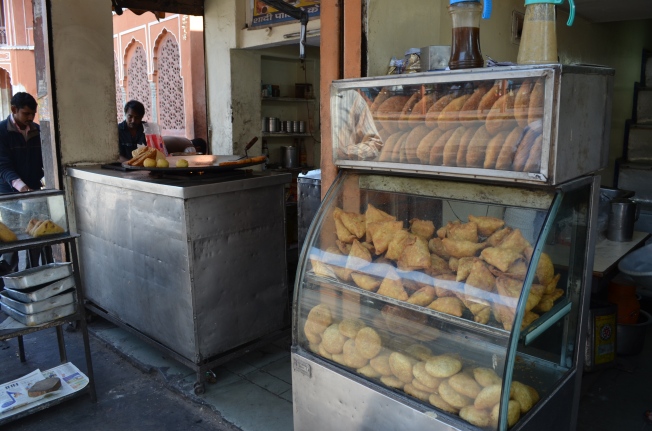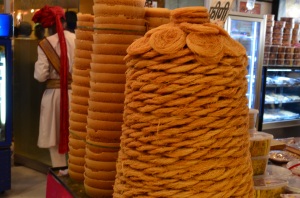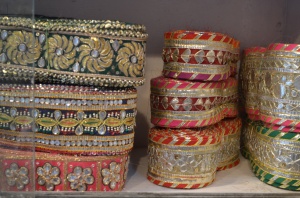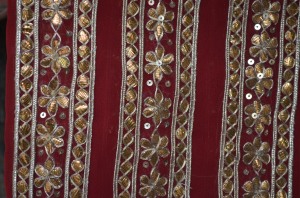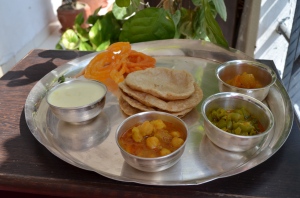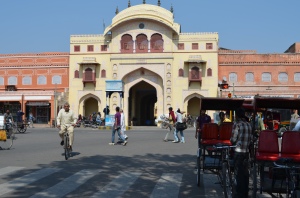 Namascar Friends.
Namascar Friends.
From today I wish to focus just on the walled city and it’s happening. To start–a little briefing about the architectural plan of Jaipur. The geometrical design of Jaipur has three parallel markets, the Kishanpole Bazaar, Chaura Raasta, and Johari Bazaar. All these three Bazaars are joined by innumerable Raastas (alleys) at right-angle. Today, we will set foot in the Chaura Raasta which is the central market. Its entrance is called the New Gate. But here I am standing at the end of the Bazaar that meets the Tripolia Gate, which is a private entry to the Royal City Palace. Today, I am not focusing much on the planning as it requires lot of details.
 While facing the Tripolia Gate if I rotate my camera anti-clock, right on the corner is the old Hind Hotel. One of the very first hotels that came into being in the city of Jaipur, unfortunately it doesn’t function anymore.
While facing the Tripolia Gate if I rotate my camera anti-clock, right on the corner is the old Hind Hotel. One of the very first hotels that came into being in the city of Jaipur, unfortunately it doesn’t function anymore.
Further I move and you’ll see this old Eatery called the Khandelwal Pavitra Bhojnalaya,. It displays “Recommended by Lonely Planet”. Though I haven’t tried food there ever, but now I’ll do it soon to share with you all. Interestingly, any pure veg eatery is called ‘Pavitra’ that means pure and Bhojnalaya is Restaurant.

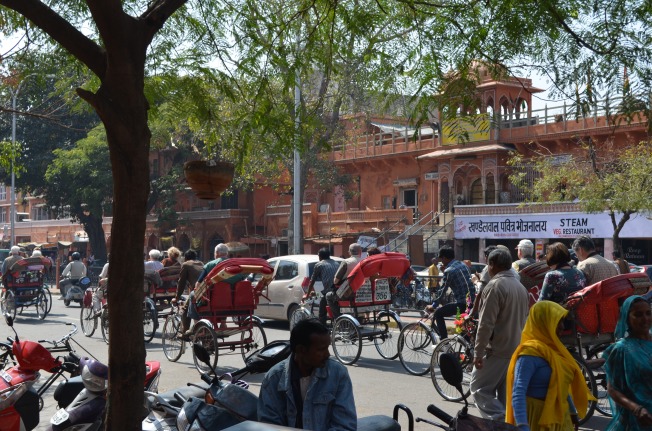 Just as I was admiring the Bhojnalaya I caught in my camera this group of foreign tourist taking a Rikshaw tour in the walled city. It surely is an interesting travel mode, also quite adventurous! Fun! I personally love and recommend it to all the tourists.
Just as I was admiring the Bhojnalaya I caught in my camera this group of foreign tourist taking a Rikshaw tour in the walled city. It surely is an interesting travel mode, also quite adventurous! Fun! I personally love and recommend it to all the tourists.
Tourists who visit Jaipur Bazaar have multiple things to do, but I usually visit for one sole reason, to eat a ‘Samosa’. One of the most famous snack in whole of India. For us it can be eaten as a breakfast, post breakfast, lunch, post lunch, as a tea snack or as a cola snack. Usually, we don’t think before having one (unless one has an upset stomach).
So let’s go the most famous Samose-wala of Chaura Raasta, the Samrat. Every market, every lane has there own very very famous smosa shops. These triple shop run under same name, selling Bread Pakora, Kachori, Samosas and also Jalebis. The LMB sweet shop about which I did a post couple of months back is globally recommended by tourists. But apart from that there are numerous not so fancy Halwai (sweet vendor) shops that sell incredible Indian sweets and snacks. And they are a must try for any tourist who want to actually taste the local flavors.
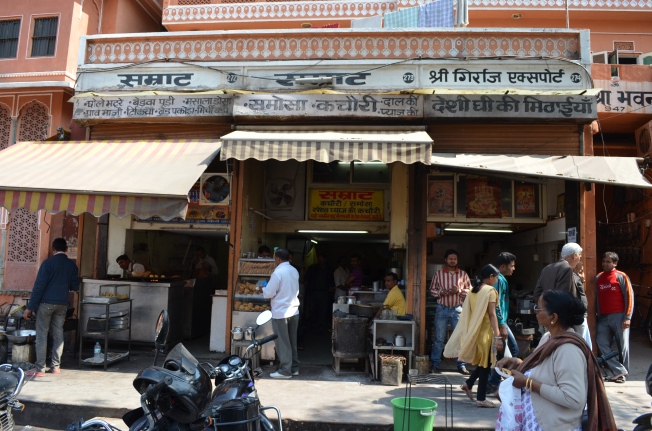 This one in particular has been around for almost a century. The best part about them is, they just sell what they can make best and seems so unaffected by modernization of F&B.
This one in particular has been around for almost a century. The best part about them is, they just sell what they can make best and seems so unaffected by modernization of F&B.
Honestly they are not the best looking eateries but surely they make the best tasting Samosas. Up in pic you can take a closer look of freshly deep fried snack variety. In simple words, the round ones are kachories i.e. dough balls filled with either dry-roasted very spicy pulse or a masala of onions. Samosas are the pyramid-shaped deep-fried thing that have essentially potato, green chilli, and green coriander. There is not much variation throughout the country.
Now if you feel it is going too hot for the palate, just step into the third shop on the right hand corner and order for a plate of freshly hot piping spiral jalebies. Jalebies are made of flour-always spiral shaped (though size varies) and soaked in sugar syrup. They are really juicy and incredibly simple.
I am not a great fan of the 5 star restaurants serving Indian Dishes, though there are some very good places in Jaipur for dinning, but I don’t like them getting too focused on transforming the simple dishes into some fancy plate of creamy thick curry.
These snacks are completely safe for anyone who loves hot spicy food. Just avoid taking chutney and curd over anything and nothing will go wrong. Also, vegetarian food is always safe and mostly harmless. If you have fewer reservations regarding the look of eating places, you’ll find innumerable eating joints in India.
So for the moment enjoy the pictures till you visit my city of Jaipur.
And here comes the bonus picture.

Be aware of these free-spirited cows that wander the roads along with all of us.
Good Day.
